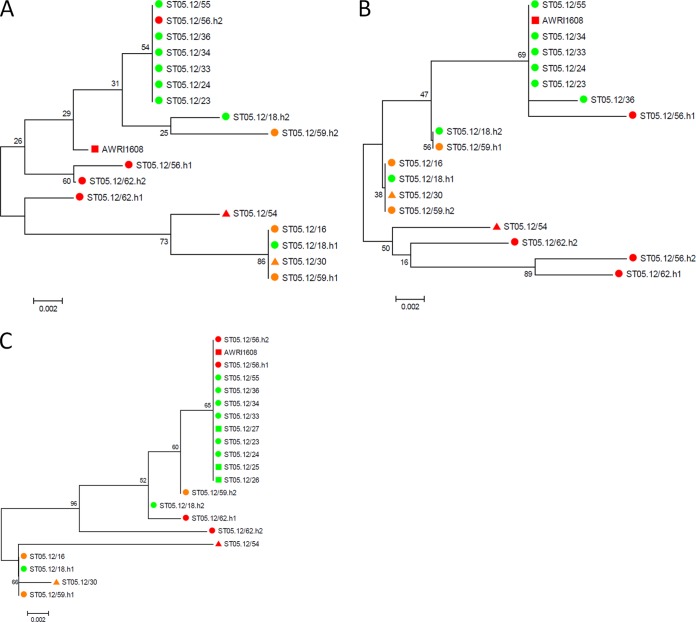FIG 7.
Phylogenetic analysis of the nitrate assimilation cluster in B. bruxellensis. Maximum likelihood phylogenies were prepared from the haplotype-resolved ORFs for the predicted nitrate reductase (A), nitrite reductase (B), and nitrate transporter (C) proteins. Bootstrap values (based on 1,000 replicates) are given at the nodes of the tree. The origin of the different strains, i.e., beer, soft drinks, and wine, are highlighted in green, orange, and red, respectively. Circles, the parent strain was able to utilize nitrate as a nitrogen source; squares, the parent strain was unable to utilize nitrate as a nitrogen source; triangles, no conclusions regarding nitrate assimilation could be made (the strains were also found to be negative on ammonium in our assay). All three genes were heterozygous in ST05.12/18, ST05.12/56 (CBS 2499), ST05.12/59, and ST05.12/62 (AWRI 1499) but were homozygous in the other strains. Strains ST05.12/25, ST05.12/26, and ST05.12/27 lost the nitrate and nitrite reductase genes. In addition to the B. bruxellensis strains investigated in this study, strain AWRI 1608, which is unable to utilize nitrate (34), was included in the analysis.

